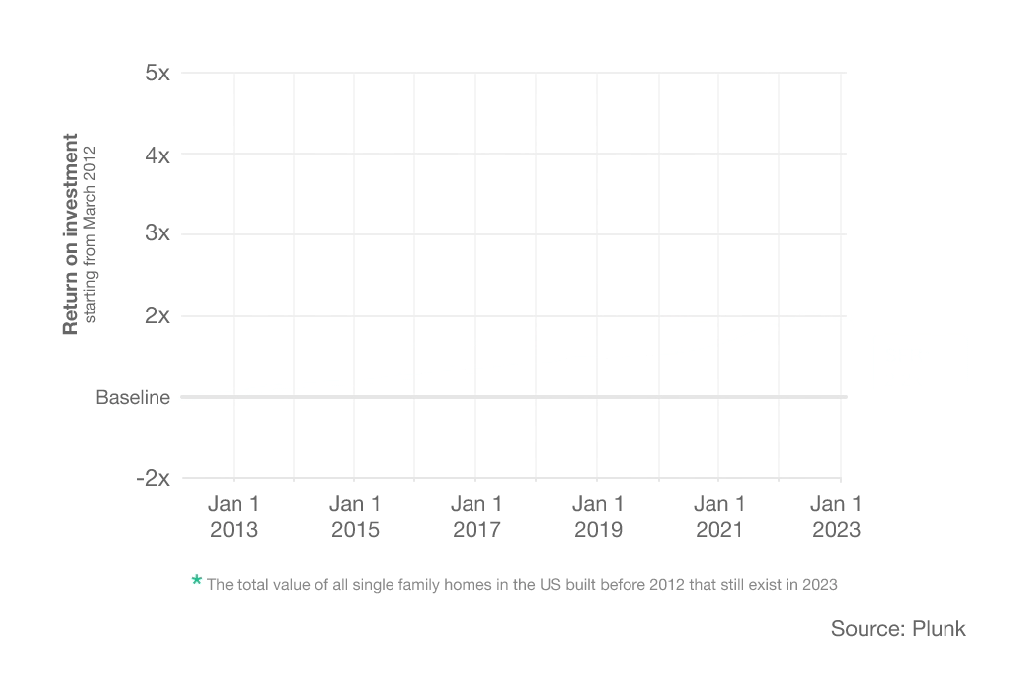What is the relationship between the single-family real estate market and equity markets? Where are they correlated and where do they diverge? Are there insights that we can glean to help guide investment decisions?

The chart above compares the standardized returns of a single-family residential real estate index (SFR) with the Dow Jones Industrial Average (DJIA), the S&P 500 Index (S&P), and the Nasdaq Composite over the past 11 years. To construct this chart, we used the total estimated value of all single-family residential units built before 2012 and still exist in 2023 (72.2 million units nationally). This avoids incorrectly inflating the SFR with the value of newly constructed properties.
A close correlation
From 2012 through late 2016, all four series show a tidy, close correlation, before the equity indexes, and especially Nasdaq, begin accelerating away from SFR. While the returns on Nasdaq appear to outstrip the others, we should keep in mind that these values ignore dividends paid to investors.
While dividend payments are common among S&P and DJIA companies, they are exceedingly rare among Nasdaq companies. Homeowners also receive a dividend of sorts, either in the value of their own shelter, or in the rent they receive from tenants of the property.
As we well know, the sudden drop in equity valuations at the start of the pandemic was followed by an unprecedented run-up in both real estate and stock prices, particularly in the technology sector. There has been surprisingly little recent formal research done on the linkages between the equity markets and real estate market, but it seems likely that technology workers who benefitted both from new wealth in stock options, along with increasing salaries due to the intense competition for talent, fed the acceleration of real estate valuations.
Additionally, this effect was dispersed geographically by those same tech workers becoming untethered from specific work locations.
Then, with rising inflation and corresponding interest rate hikes, the party stopped — or at least quieted down. Interestingly, while equity values peaked in December 2021, SFR valuation continued increasing for another seven months. Meanwhile, both the S&P and DJIA dropped to levels comparable to the SFR before stabilizing. Contributing to this lag was almost certainly a flow of capital out of the suddenly destabilized stock markets and into real estate.
Real estate makes a classic comeback
While there has been a steady drop in SFR values since then, the decline has been nowhere near as dramatic as with the equity indexes, nor as drastic as many prognosticators expected.
So, what is propping up real estate valuations? One factor may be that, after decades of low inflation and interesting rates, we are rediscovering one of the classic purposes of real estate investment: hedging against inflation. In inflationary periods, capital tends to flow to tangible goods, such as gold and real estate, whose long-term value is less prone to being eroded.
The interrelationships between real estate and stocks becomes more interesting when we look at specific geographies and market segments, which is what the future articles in this series will dig into.
Vince O’Neill is the Chief Economist of Plunk.
